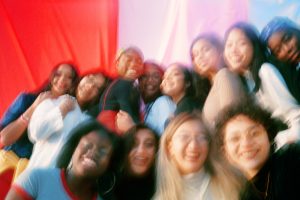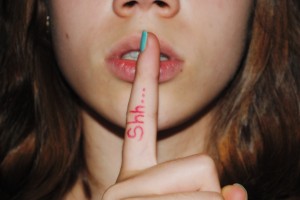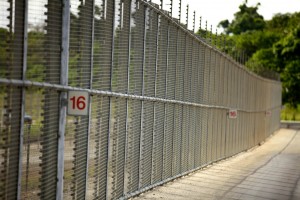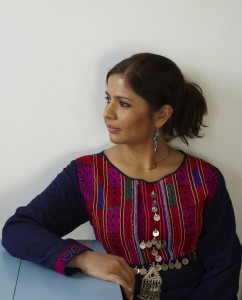
No Man’s Land: Inside Women-Only Spaces
by Jenny Walker | March 5, 2015
The renovated old vicarage in the small Yorkshire village of Horton-in-Ribblesdale is a perhaps unlikely setting for Britain’s only not-for-profit, cooperatively run holiday centre for women and children. But since 1980 the Women’s Holiday Centre (WHC) has been providing a place for women to relax and enjoy themselves in a safe, supportive environment. An hour’s train journey away is the Bradford Women’s Refuge (BWR), established in 1985, one of the two women’s refuges in the city (the other catering solely for BME families). It is also a women-only space, but one that caters for women and children who have experienced domestic abuse. It operates on a feminist ethos and aims to involve the input of service users as much as possible.
Sarah sits cross-legged on the floor of the sunlit playroom, helping her four-year old son find the edges of a jigsaw puzzle as she tells me about her first visit to the WHC in 1999. “To me, initially it was about safety,” she says, “and the need for a place to be myself without anyone talking over me.” The room is filled with the shouts of children hula-hooping in the garden and the background clatter of coffee cups from the kitchen. Now, it is the centre’s accessibility for children which Sarah most appreciates. “If you couldn’t bring kids it would cut out a lot of people. It’s meant that me and my partner can go on holiday together.”
There is no particular ‘type’ of woman who comes to stay at WHC. In Sarah’s words it is “a kind of neutral territory” made up of “people from all over, from London, Birmingham, Bradford, of all classes, all races.” During my stay at the centre I make meals, wash up and drink tea with a retired evangelical Christian, an Avon saleswoman from Hull and a queer couple from Hebden Bridge. There is certainly something liberating about the disparate group of people who sit easily around the camp fire that night drinking wine and talking, women who it is hard to imagine meeting or spending time together elsewhere. “Class doesn’t matter here,” affirms Chez, one of the centre’s full time workers.
I first visited the centre with a friend a year ago. Though neither of us felt that we had anything in particular from which we needed to escape, we both noticed an intangible sense of release and easiness, even relief, come over us during our stay: a bit like breathing in fresh air after months of obliviously inhaling city pollution. There is no code of conduct stuck up on the walls encouraging a non-judgemental, open and accepting atmosphere. Instead, there are pieces of artwork and poetry made by women and children who have stayed over the years, crayoned maps of local walks and handwritten signs such as “If you see a job you can do, please go ahead”. Many of the women I speak to at the centre find it difficult to pinpoint exactly what makes it so special. “There’s just something magical about the place,” says Laura, the other full-time worker. “[The women who stay] are not support workers and we’re not support workers, but it happens naturally.” Chez nods emphatically: “People come here and find what they need.”
The viability of creating and maintaining a “neutral territory”, a place where people can feel safe and be themselves without fear of judgement, is an issue that has long been subject to debate within feminist circles and other liberation groups. Although the WHC doesn’t classify itself as a refuge, playing host to hen nights and writers’ groups as well as providing a safe space for those who may have suffered from trauma, all of the women I speak to emphasise the importance of it being a women-only space. Jenny, a young woman from Hull on holiday at the centre with her mother, cousin, daughter and nieces describes the centre as “calm and peaceful.” I ask her how she would feel if men were also allowed to stay and she is adamant that “it would defeat the point, throw a spanner in the works. Men are like peacocks, they need to stamp the ground.”
When I ask her if she believes there is any such thing as a truly safe space, Laura recognises the practical limits to such an ideal. “Yes and no. You can’t ever guarantee how a person feels inside and feeling safe, I think, is as important as being safe. All that people can do is offer an environment that treats those who come through its doors equally, and with genuine kindness and respect.” Indeed, some level of disagreement is inevitable in a place with its doors as open wide as the WHC, but the ability to talk issues out or to respect differences of opinion is something I see repeatedly during my stay.
The social phenomenon of women being silenced by men has been identified and critiqued by numerous feminist theorists. Andrea Dworkin argues that “men often react to women’s words – speaking and writing – as if they were acts of violence; sometimes men react to women’s words with violence. So we lower our voices… Most women have experienced enough dominance from men – control, violence, insult, contempt – that no threat seems empty.” In Man Made Language (1980) Dale Spender asserts that language is a primary means by which women’s power is denied them: “This monopoly over language is one of the means by which males have ensured their own primacy, and consequently have ensured the invisibility or ‘other’ nature of females.” These arguments are supported by a study undertaken by American Political Science Review in 2012, which found that in collaborative group settings “the time that women spoke was significantly less than their proportional representation – amounting to less than 75% of the time that men spoke.” In the WHC visitor’s book an anonymous comment again links the safety and openness of the centre to its women-only policy: “The house, the workers, enable me to be myself, with others, in a space which feels unique. Only women can come here.”
Women-only policies such as the one which helps women to relax in Horton-in-Ribblesdale are also a vital prerequisite for rehabilitation schemes which aim to aid and empower survivors of domestic violence. At the BWR, I meet Najida, 21, who has been staying at the refuge for several months since escaping from an abusive forced marriage. She describes the difference between BWR and the sense of isolation and fear of the mixed-gender temporary accommodation in which she stayed before. “At first I was really scared. If someone started shouting at me I wouldn’t speak up, I’d just start crying so that I came to the point where I’d start screaming.” She describes how important the support of the other women at the refuge has been in recovering her confidence and sense of self-worth. “We just have a chat sometimes, sit down all together and if you’re feeling alone or having a hard time it really helps – to have a fun time and just get over that stress.”
Mary, Team Leader of the BWR, tells me how crucial she believes it is to maintain the communal living set-up of the refuge. “The women do come together and the support between them is pretty amazing. They’ve been told for a long time that ‘it’s your fault’ and seeing other women in the same situation dispels that myth.” For Najida, an important part of her time at the refuge has been regaining a voice of her own, aided by the solidarity she feels with the other women there: “Now I can actually say that look, this is my point of view. I’ve seen so much of a difference in myself. Now I can confidently go outside.”
However, specialist domestic violence services such as the BWR are increasingly under threat since the changes made to the sector in 2010. Services in the violence against women and girls sector are going out to tender next April to private companies, a process which Mary argues will result in “more hierarchies, lower pay and greater staff turnover”. For her, it is part and parcel of a “massive threat to specialist services and to the skills and expertise the staff have built up over the years.” Last year, the Women’s Aid Annual Survey identified a rise in the provision of generic and short-term service provision at the loss of more specialist domestic violence providers. It found that “there [were] 98 more bed spaces in 2013 than in 2010 but there [were] 21 less specialist refuge providers.” Specialist services for BME women have been disproportionately cut, with 47% of services experiencing “a significant loss of funding”. Women-only services are also being put under pressure to provide support for men, “despite lack of demand and lack of evidence that women’s services are best placed to meet men’s needs”.
Polly Neate, the Chief Executive of Women’s Aid, argues that the “chronic structural underfunding” of the violence against women sector is due to the fact that it tries to “meet a need whose very existence has often been disputed every step of the way”. The refuges and outreach services which aim to combat violence against women are vulnerable to the very same systems of prejudice and oppression which cause the problems they aim to combat.
Marilyn Frye wrote in The Politics of Reality (1983) that “it is always the privilege of the master to enter the slave’s hut. The slave who decides to exclude the master from her hut is declaring herself not a slave.” Women-only spaces are not a privilege. Those who have experienced violence at the hands of a society which so often treats them as second-class citizens have the right to feel safe and accepted. Her time at the BWR has given Najida the chance to regain control over her life. “I have hope, and I know those hopes are going to come true,” she assures me. Despite their hugely differing life experiences, the optimism and confidence that this young Muslim woman feels reminds me of Sarah’s description of the first time she visited the WHC. “On the way there we were really nervous. We didn’t know what to expect, and we got so lost,” she laughs. “On the way back we didn’t even look at the map, we just sang.”
Image by Erica Joy Segovia




